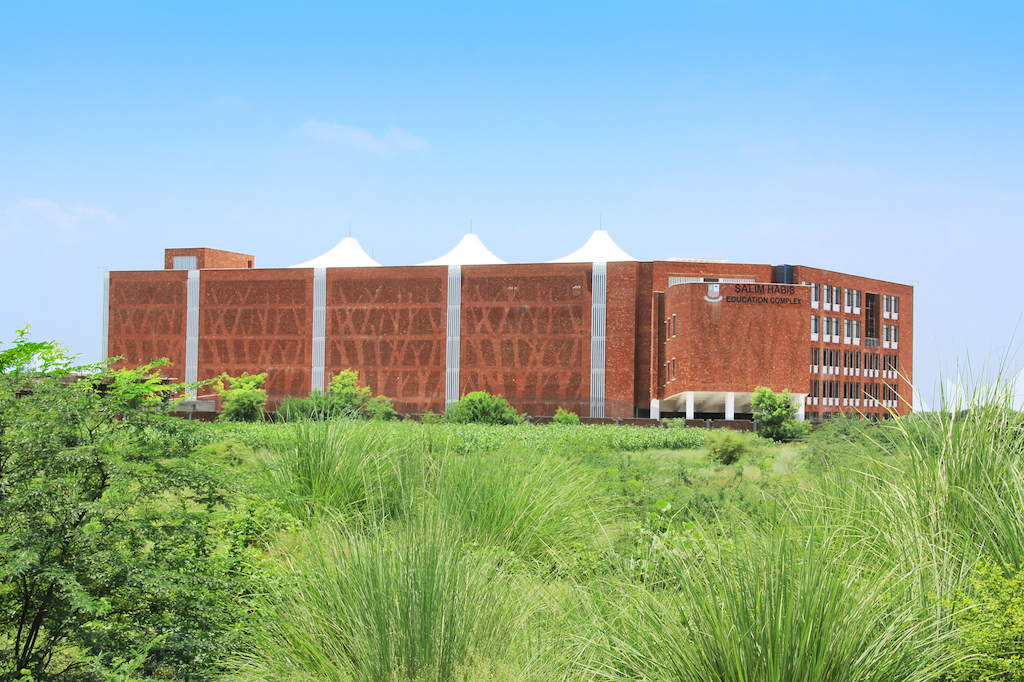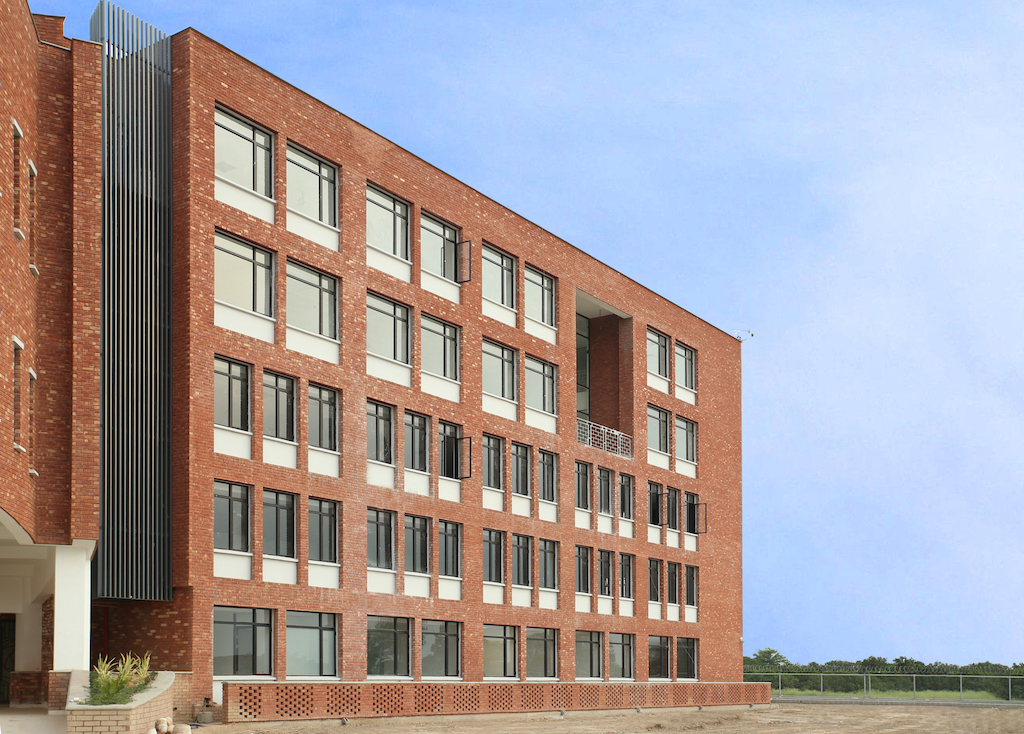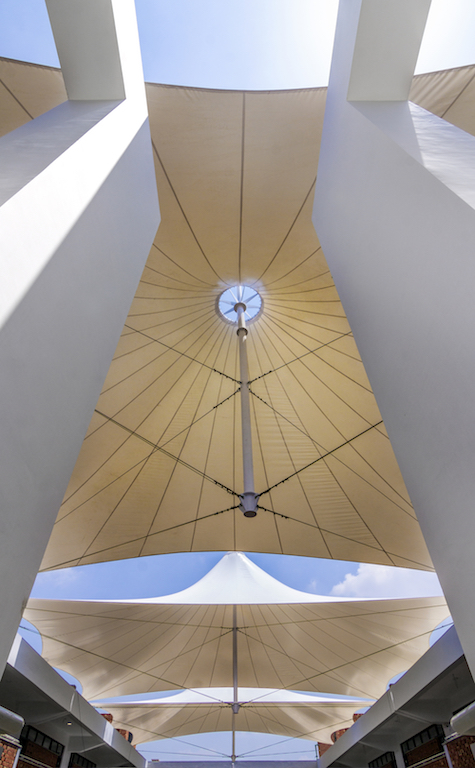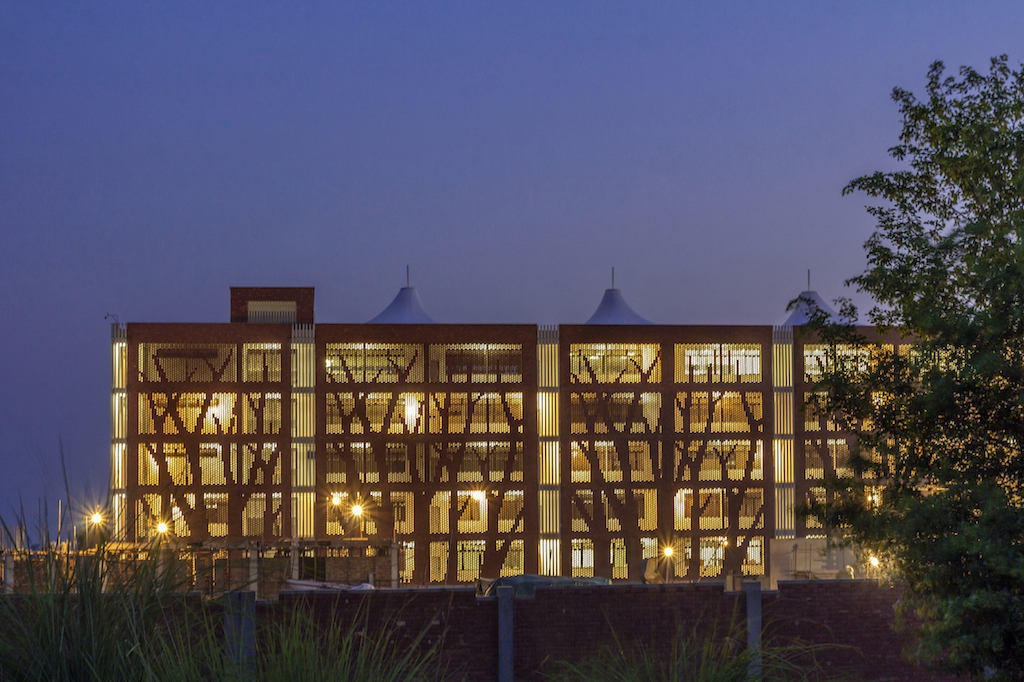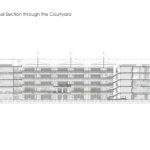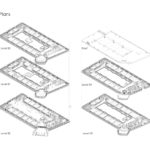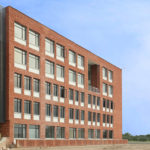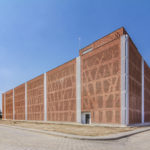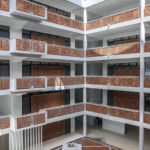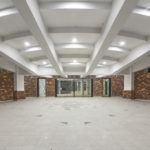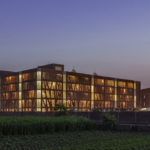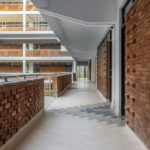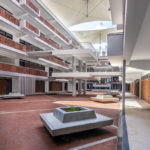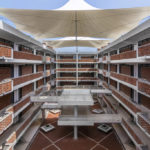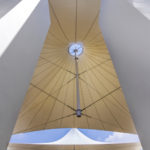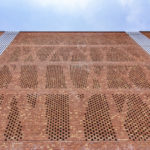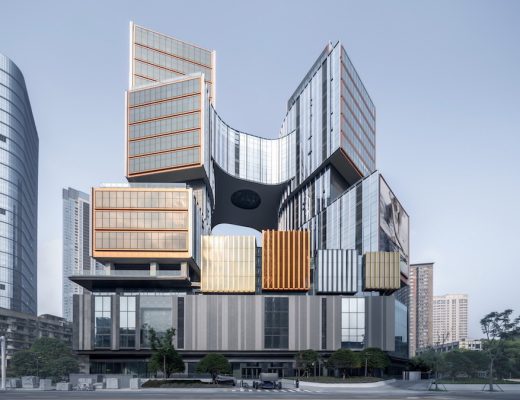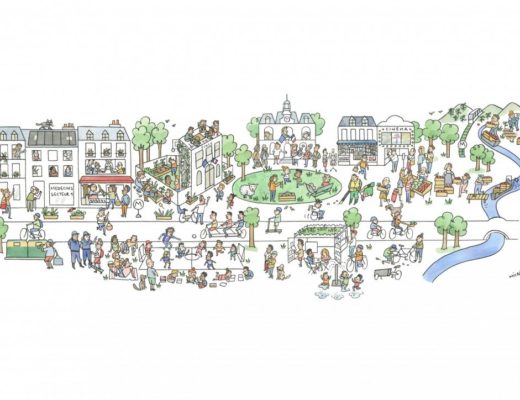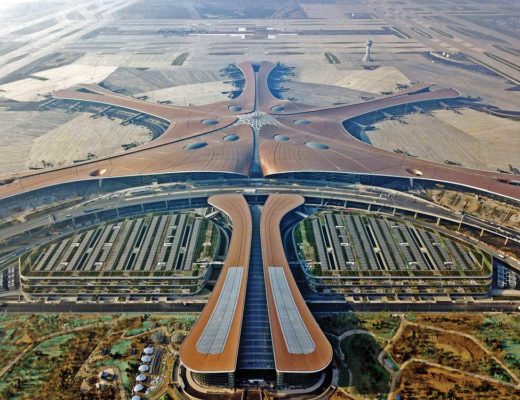The learning institute, Salim Habib Education Complex, designed by Ali Arshad Associates aligns with the vision of the client, The Salim Habib Education Foundation (TSHEF), a non-profit organisation that aims to provide quality education and learning infrastructure to the Pakistani youth. It has been envisioned as a modern educational facility and a college building that acts as a knowledge hub for the region and would inspire the youth to seek higher education.
The site is nestled between lush mandarin orchards in the city of Toba Tek Singh, in the Pakistani province of Punjab. The building is a part of the greater 50-acre education and healthcare campus aimed at providing quality education to the entire central Punjab region. The project comprises lecture halls, computer and science labs, a well-equipped two-storied library, and two seminar halls along with administrative and faculty offices organised around a courtyard which forms a central multifunctional communal space.
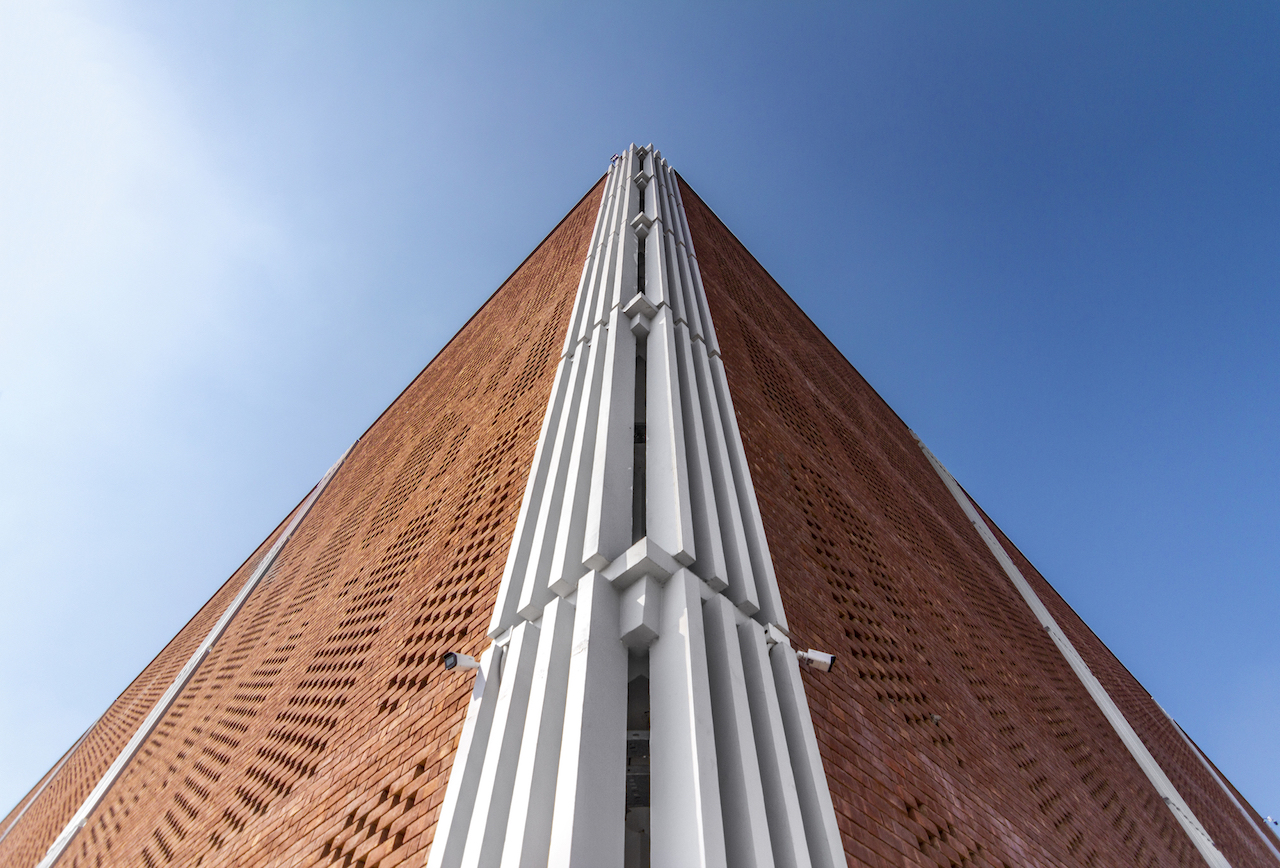
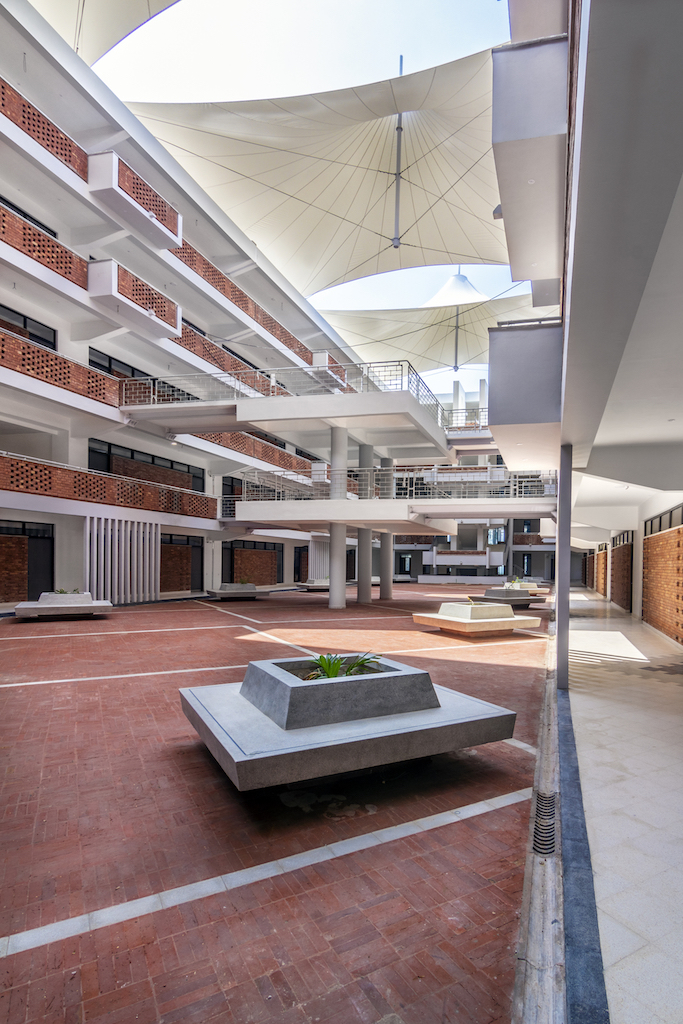
The entrance at the north side breaks away from the orthogonal form of the building and creates an inviting approach by lifting the seminar hall, on top of which sits a massive wind-catcher allowing natural ventilation. The courtyard rises vertically, providing a visual connection from all floors and facilitating natural airflow throughout the building. A translucent fabric canopy floats over the courtyard which provides shade against the direct sun and contrasts the solidity of the built form with an ethereal lightness. Link bridges spanning over the courtyard provide connection on all floors and offer break-out and informal gathering spaces for students.
One of the many challenges of the site was extreme temperatures during the hot summer season that necessitated the need to insulate the building without compromising the quality of light entering the spaces. In response to this, a double skin façade was conceived on the southeast and west sides of the building. This considerably cools down the temperature inside the building by mitigating solar gain and allowing the building to have a unique identity. This perforated screen, built with 690,000 red bricks, is an amalgamation of local craftsmanship and technology, designed in response to the intense local climatic conditions. The pattern of the screen echoes the surrounding foliage, the concept of which is to embody a growing tree of knowledge.
The site, located in a small rural town, posed several challenges ranging from limited access to skilled labour to lack of advanced building materials. Pre-cast and in-situ terrazzo floors are used extensively alongside the red brick façade. To consciously reduce the overall carbon footprint, the building mostly employs locally manufactured materials, all of which allowed the architects to celebrate the indigenous architecture and traditional language. The design process is motivated by sensitivity and a climate-conscious approach which has enabled the architect to create a building that stands as a modern landmark while being firmly rooted in its context.
Project details:
Architect: Ali Arshad Associates
Area: 15,795m²
Year of completion: 2020
Manufacturers: AutoDesk Adobe, Mehler Texnologies, Revit Trimble Navigation
Architect-in-charge: Ali Naqvi
Design team: M. Uzair Matin, Adnan Yamin, Waqas Junaid, Syed Danial Ali
Client: The Salim Habib Education Foundation
Engineering: Republic Engineering Corporation Private Limited
Landscape: Ali Arshad Associates
Consultants: Suhail Ahmed Associates, Hasnain Associates
Contractors: Ittefaq Group
City: Toba Tek Singh
Country: Pakistan
See the full image gallery here:
Photos: Focus Art and Architecture; RDC Architectural Photography
You might also like:
Woha Architects to transform former wasteland into sustainable campus for Bangladesh university
Anandaloy community project by Studio Anna Heringer announced winner of OBEL Award 2020


